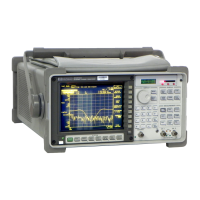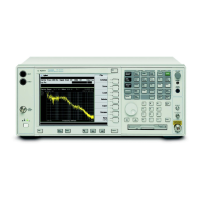Triggering
Starting a measurement is a three-state process. The first stage is pressing the
[
Start
] key, the second stage is arming the measurement, and the third stage is
triggering.
Arming merely enables the analyzer to respond to a trigger. Triggering tells
the analyzer to begin collecting data. Both arming and triggering can be
automatic or subject to specified conditions. If you specify automatic arming
and free run triggering, the analyzer begins collecting data as soon as you press
the [
Start
]key.
The Agilent 35670A has several different types of triggering. You can select a
particular trigger to ensure that the analyzer samples input data at an
appropriate time—for example, to synchronize a measurement with an external
device. Not all trigger types are available with every instrument mode.
The trigger types available include the following:
• Free Run Trigger. The analyzer collects data continuously, without waiting for a
trigger signal.
• External Trigger. The analyzer triggers when the specified trigger conditions are
met at the external trigger input on the rear panel.
• Channel Trigger. The analyzer triggers when the trigger conditions are met at the
specified channel’s input connector.
• Source Trigger. The analyzer triggers from the internal source.
• GPIB Trigger. The analyzer triggers when it receives an appropriate GPIB
command.
The following table lists the trigger types available for each instrument mode.
For detailed information on specific trigger types, see online help.
Agilent 35670A
Operator's Guide Setting Up a Measurement
Part I-13

